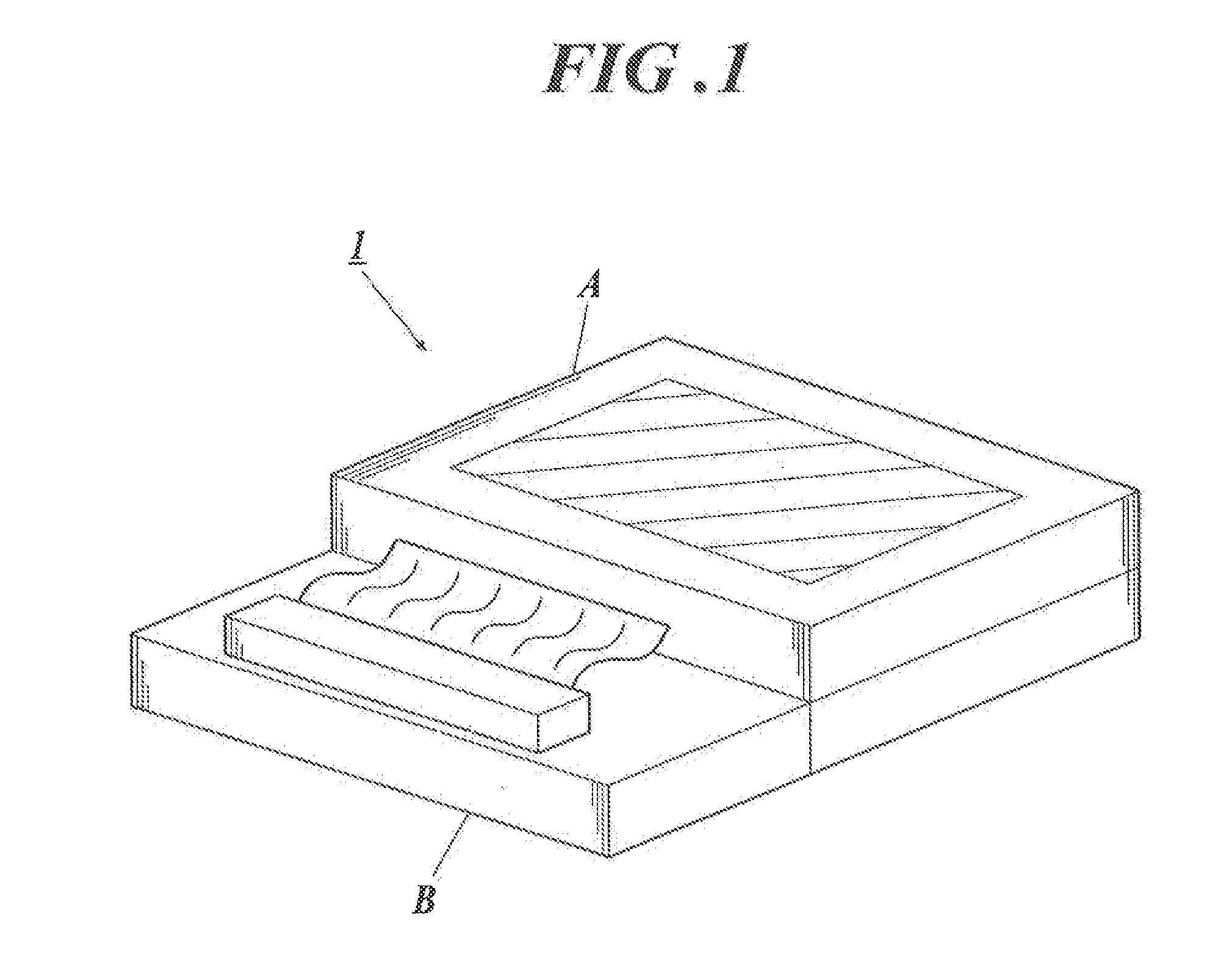Organic electroluminescent element, lighting device, and display device
- Summary
- Abstract
- Description
- Claims
- Application Information
AI Technical Summary
Benefits of technology
Problems solved by technology
Method used
Image
Examples
example
Example 1
Measurement of 0-0 Transition Band
[0346]The 0-0 transition band in the emission spectrum of the compound according to the invention was measured at 77 K and at 300 K in the following manner.
Measurement of 0-0 Transition Band in Emission Spectrum
[0347]A compound to be measured is dissolved in 2-methyltetrahydrofuran that is thoroughly deoxygenated. The solution is loaded into a measuring cell, and then irradiated with excitation light at a liquid nitrogen temperature of 77 K to measure an emission spectrum after irradiation of the excitation light.
[0348]For any compound that cannot dissolve in such a solvent, any other solvents may be used to dissolve it (the solvent effect on the emission wavelength is negligibly slight in the measurement and difference is not substantially observed in the measured values).
[0349]The determination of the 0-0 transition band will be described. The 0-0 transition band, in the present invention is defined as a maximum emission wavelength that a...
example 2
Fabrication of Organic EL Element 2-1
[0359]A 100-nm-thick indium tin oxide (ITO) film was formed as an anode on a glass substrate (100 mm×100 mm×1.1 mm) (the resulting substrate is available as NA45 from NH Techno Glass) and then the substrate was patterned. This transparent support substrate provided with the transparent ITO electrode was subjected to ultrasonic cleaning with isopropyl alcohol, and then dried with dry nitrogen gas, followed by UV ozone wash for five minutes.
[0360]The transparent support substrate was fixed to a substrate holder of a commercially available vacuum deposition system. Resistive heating boats made of molybdenum, each containing 200 mg of α-NPD, 200 mg of a host compound (H-1), 200 mg of BAlq, 100 mg of the comparative compound 1 (Ir-12), and 200 mg of Alq3, respectively, were installed in the vacuum deposition system.
[0361]A pressure in a vacuum chamber was reduced up to 4×10−4 Pa, and the heating boat of α-NPD was electrically heated to deposit α-NPD o...
example 3
Fabrication of Organic EL Element 3-1
[0383]A 100-nm-thick indium tin oxide (ITO) film was formed as an anode on a glass substrate (100 mm×100 mm×1.1 mm) (the resulting substrate is available as NA-45 from AvanStrate Inc.) and then the substrate was patterned. This transparent support substrate provided with the transparent. ITO electrode was subjected to ultrasonic cleaning with isopropyl alcohol, and then dried with dry nitrogen gas, followed by UV ozone wash for five minutes.
[0384]A solution of 70% poly(3,4′-ethylenedioxythiophene)-polystyrenesulfonate (PEDOT / PSS, Baytron P Al 4083 by Bayer Holding Ltd.) in pure water was coated to form a film on the transparent support substrate by spin coating and dried at 200° C. for one hour to be a first hole transfer layer having a thickness of 30 nm.
[0385]A chlorobenzene solution of a hole transfer material (Poly(N,N′-bis(4-butylphenyl)-N,N′-bis(phenyl))benzidine (American Dye Source, Inc., ADS-254)) was coated to form a film on the first h...
PUM
 Login to View More
Login to View More Abstract
Description
Claims
Application Information
 Login to View More
Login to View More - R&D
- Intellectual Property
- Life Sciences
- Materials
- Tech Scout
- Unparalleled Data Quality
- Higher Quality Content
- 60% Fewer Hallucinations
Browse by: Latest US Patents, China's latest patents, Technical Efficacy Thesaurus, Application Domain, Technology Topic, Popular Technical Reports.
© 2025 PatSnap. All rights reserved.Legal|Privacy policy|Modern Slavery Act Transparency Statement|Sitemap|About US| Contact US: help@patsnap.com



